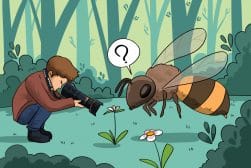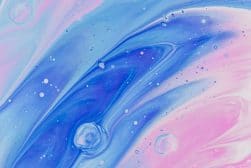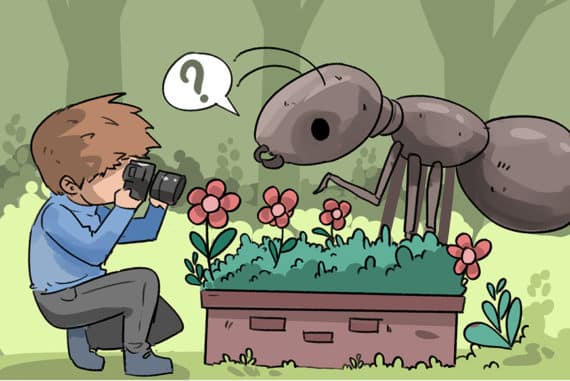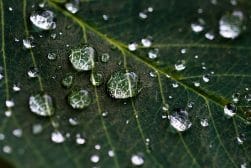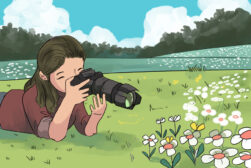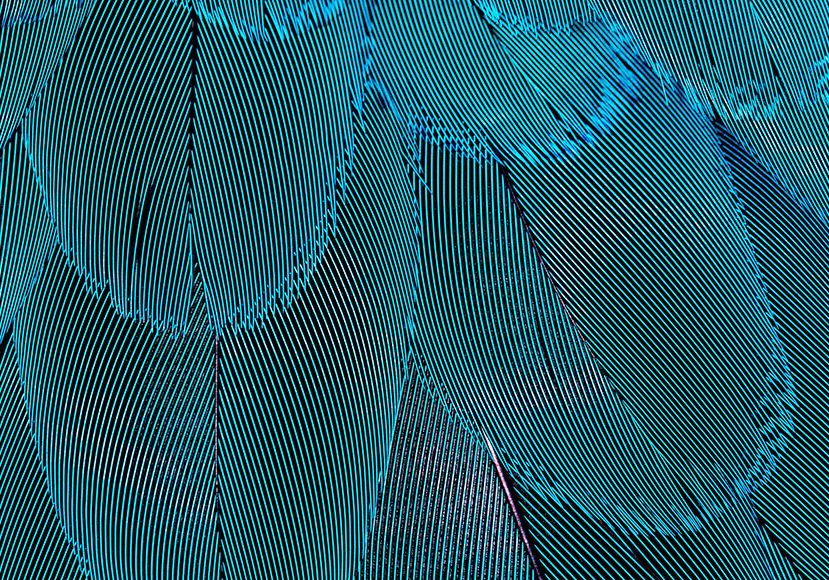
Abstract Macro Photography Ideas, Tips & Examples
Dive deep into the world of abstract macro photography with inspiring ideas, expert tips, and captivating examples to fuel your creativity.
Learn | By Leonardo Cavazzana
Abstract macro photography is all about finding beauty in the everyday details.
A single drop of water, a feather, a leaf — with the proper perspective and skills, these ordinary objects become very amusing and intriguing subjects.
In this article, I’ll guide you on this creative journey, sharing essential tips and insights to help you master the art of abstract macro photography.
By the end of this read, you’ll understand the techniques and discover how to see the world around you from an entirely new perspective.
Table of Contents
What is Abstract Macro Photography?
Macro photography is all about getting up close and personal. The magic of macro lies in revealing the intricate details of tiny subjects, inviting us to explore a miniature world as if it were life-sized.
It’s an invitation for people to see something common from a brand-new perspective. And that’s exciting.
Abstract art, as defined by Oxford, is “Art that does not attempt to represent external reality, but seeks to achieve its effect using shapes, forms, colours, and textures.”
That means that abstract art prioritizes aesthetics. It’s an invitation for the viewer to let his or her imagination wander. So a good starting question is, how do we spark imagination with macro photography as a medium?
Abstract macro photography combines both, taking this to the next level. It captures tiny details in an artistic, impressionistic way.
You get up close and personal with textures, colors, and patterns.
As it allows you to get closer, a whole new world of possibilities in the unexplored details will open up.
1. What Makes a Photo ‘Abstract’?
Abstract photography consists of creating images that express ideas and emotions without the intention of creating a traditional or realistic image.
Through perspective, proximity, light, and composition, it reveals details that usually are ignored, transforming the world we see into something new, often unrecognizable.
Abstract images are perfect for sparking the viewer’s imagination.
2. The Beauty of Macro

Image by pressfoto
Macro Photography is about capturing the most minor details, sometimes not perceptible to the naked eye.
The feeling of photographing something new just by getting closer is one of the most exciting activities that photographers of all levels should try.
It’s widespread to associate macro photography only with photos of insects and plants, but that’s not all.
The technique can be used in various ways, photographing products, food, soap bubbles, and other subjects wherever your creativity allows.
Recommended Equipment for Abstract Macro Photography
Having the right equipment is essential if you’re serious about taking impressive abstract macro images.
But if you just want to play around and experience a new world with new opportunities, your cell phone might be the first step.
1. Smartphone

Photo by Bhaumik Birje
A cell phone is probably not the first thing you consider when taking macro photos. But what if you could get impressive results using just the smartphone in your pocket?
Many smartphones released in recent years have a macro lens or a dedicated macro photography feature, allowing you to get very close to your subject and capture fine details.
If your phone doesn’t have these options, you can buy a macro lens for your phone instead of investing in expensive equipment and enjoy.
2. Cameras and Lenses

Image by Freepik
Two types of cameras work for macro photography: the point-and-shoot and the interchangeable lens body.
Brands like Nikon and Canon have great point-and-shoot cameras with a perfect MACRO PHOTOGRAPHY mode, which can help you get started in the world of abstract macro images.
But if you already have a camera where you can change lenses, then your focus must be on choosing the ideal lens.
The best macro lenses on the market allow you to get very close to the subject, removing any distractions from your composition.
Usually when giving macro photography a first try, the ideal is to use lenses from 90mm upwards to get you really close and intimate with your subject. But using a wide macro lens like a 24mm can create a sense of proximity to the subject that is very interesting.
- How to use a macro lens
- Best cameras for macro photography
3. Lighting Tools

Image by piki superstar
The more well lit is your scene, the better. Consider adding a little more light – natural or alternative light sources, such as a lamp, a flash, or LED panels.
Not only this can create an interesting background bokeh or even beautiful edge lighting, depending on the light source, position, and the desired composition.
This will allow you to have more depth of field and more of your image in focus as you can close up your aperture.
4. Tripod

Photo by Allec Gomes
A tripod is another tool you’ll need for abstract macro photography. As you’ll be very close to the subject, it’s easy for the object to go out of focus or lose your framing with the slightest movement.
A nice heavy-duty tripod will help ensure that your image is as sharp as possible.
5 Techniques and Approaches to Abstract Macro Photography
Now, let’s move on to some tips on thinking outside the box and taking amazing abstract macro images. Check out these 5 macro photography tips.
1. Keep it simple

Image by Freepik
Abstract macro photography is about showing your subject in a different light, from a different perspective, focusing on the shapes, colors, and lines that will give power to the final photo.
So simplify your composition. Eliminate all distracting elements.
2. Play with the lighting

Image by Freepik
The effects of light and shadow are intensified in a macro scene. So, if you’re shooting in an environment where you have control of the light, it’s your chance to experiment with different types of lighting and backgrounds to create original photos.
3. Look for contrasts to engage the viewer

Image by Freepik
One of the most powerful compositions in abstract macro photography is using contrast to highlight your subject.
Contrast can be by color, shadow, light, or even texture. So, look for some contrast to compose your abstract images.
4. Try focus stacking

Photo by Nathan J Hilton
When you are shooting macro, your line of focus is usually very shallow.
Try setting your camera on a tripod adjust focus throughout your whole image and stack them in post.
This will give you such a powerful abstract macro image that looks like it belongs in a watch magazine.
5. Break the rules
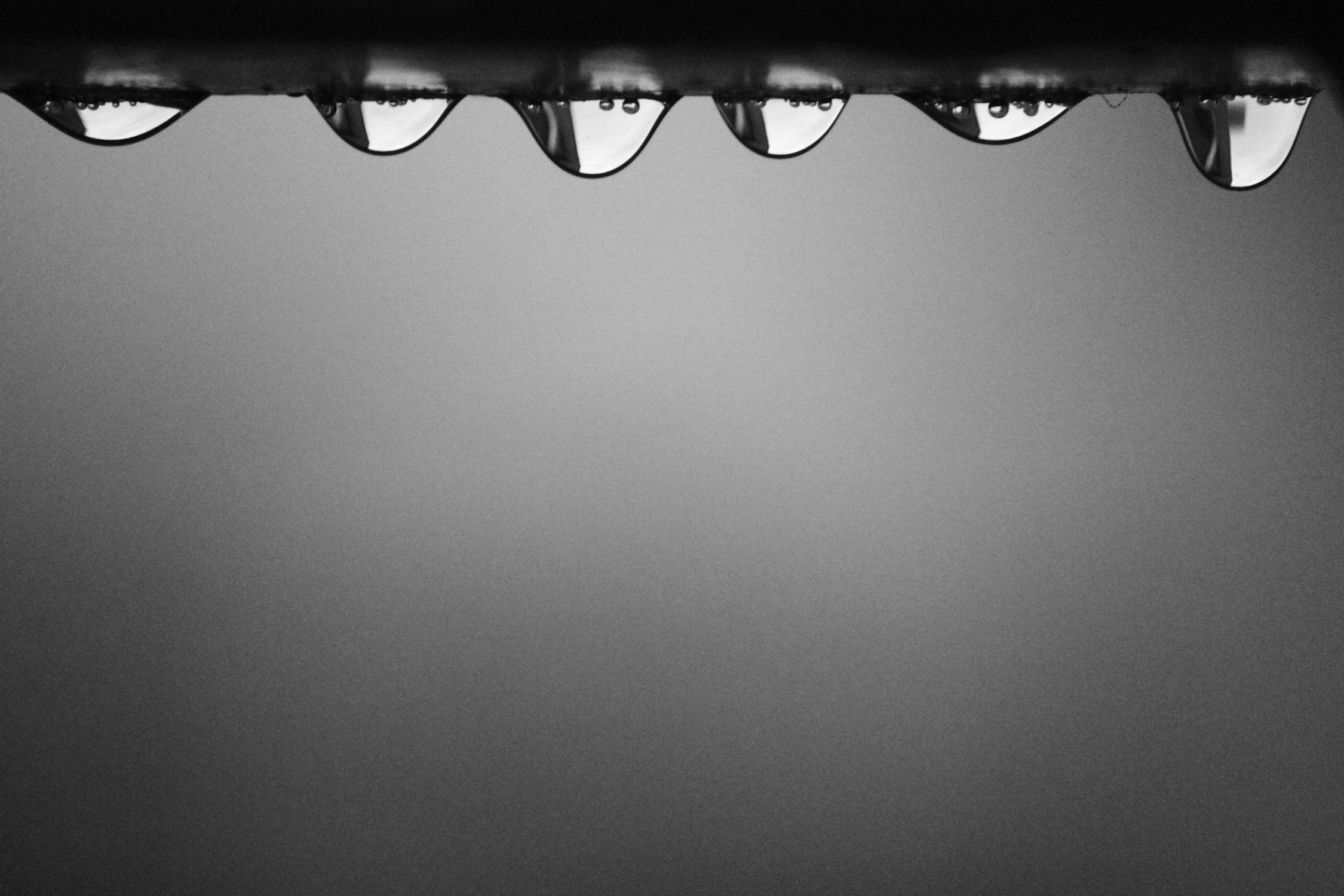
Photo by Gabriel Peter
In abstract photography, the traditional rules of composition that we know don’t necessarily apply.
Use this to practice your artistic eye and unleash your creativity by playing with different depths of field, sharpness, and blur.
Sometimes following your instinct instead of a set of rules will lead you to your best abstract image ever.
Post-Processing Tips for Abstract Macro Photos
Now is the time to edit your photos. Here are some tips to help you, but remember: to get the full potential out of your image, you must shoot in RAW.
1. Create a mood by choosing the white balance
You can make your photos look cool, warm, or something in between with white balance.
When the color tones are carefully chosen, there is a significant improvement in the mood of your photos, especially if shooting abstract.
When shooting abstract, a neutral well-balanced white tone isn’t necessarily what you are looking for.
Feel free to experiment and see what works best for your photo.
2. Sharpen to Bring Out Details
Macro photography is all about showing the small details. That means you have to make sure that the details can be seen.
That’s where sharpness comes into the picture.
Sharpness ensures that your macro shots have crisp, precise details.
But just like when color grading, it’s very easy to overdo sharpness. That’s why I recommend that you take baby steps when using this tool.
Unfortunately, there is no rule for using it. You must test what looks best for you, from adding sharpness to removing it.
This will depend on your taste and your inspiration during editing.
3. Color Grading and Manipulation
In abstract macro photography, color is essential and needs to be enhanced to grab the viewer’s attention.
A good starting point is the HSL tool, where you control each color’s tone, brightness, and saturation individually.
You should test this tool to identify the colors in your photo and choose which colors you want to stand out.
My recommendation is to always take a break every now and then to let your eyes rest. Over-editing is one of the easiest ways to ruin a beautiful photo.
4. Cropping and Framing
In macro photography, a simple composition is powerful.
While getting the right composition in the camera is ideal, you’ll likely need to adjust the composition when you see the photo on a larger scale. Try to create a composition that isolates and highlights the subject.
Not getting close enough is a very common problem in macro photos, so crop to make sure this doesn’t happen.
32 Abstract Macro Photography Ideas
Here are some ideas for creative abstract photography of macro images:
- Texture Close-ups:
- Rust on metal
- Peeling paint
- Fabrics or textiles under different lighting
- Light and Shadow Play:
- Sunlight filtering through blinds or curtains
- Silhouettes against colorful backgrounds
- Reflections and refractions in water
- Macro Abstracts:
- Dewdrops on spider webs
- Veins of leaves
- Bubbles in liquids
- Movement Blur:
- Spinning objects captured with slow shutter speed
- Fast-moving water or clouds
- Intentional Camera Movement:
- Panning during a sunset or sunrise
- Rotating the camera during a long exposure
- Bokeh Play:
- Bright city lights at night
- Sunlight filtering through trees
- Reflections:
- Glass buildings reflecting the sky
- Still water reflecting the environment
- Distorted reflections in funhouse mirrors
- Digital Manipulation:
- Overlapping or blending multiple photos
- Distorting images using software tools
- Color Exploration:
- Single color themes (e.g., monochrome red or blue)
- Contrasting color patterns
- Architectural Abstracts:
- Close-ups of repetitive architectural details
- Distorted perspectives of tall buildings
- Oil and Water:
- Oil droplets floating on water with colorful backgrounds
- Crystals and Glass:
- Zooming into the intricate details of crystals or broken glass
- Smoke Patterns:
- Incense smoke against a dark background
- Colored smoke bombs
- Sand and Soil:
- Patterns left by the tide on sandy beaches
- Cracks in parched soil
- Experimental Lens Techniques:
- Freestyle lensing or “lens whacking”
- Shooting through prisms or crystals
4 Abstract Macro Photographers to Follow
How about getting inspired by some beautiful photos from the world of abstract macro photography?
I’ve selected 4 famous macro photographers who do beautiful work with their abstract photos and macro subjects. Check them out!
Jane Simmonds (@jane_simmonds_art)

Yan Cook (@yan_cook)

Bruno Militelli (@bruno.militelli)

Nathan Renfro (@microworldofgems)

Final Words on Creating Abstract Images
Abstract macro photography opens up a whole new visual world that can be very fun and visually interesting.
It does require attention to detail so as not to lose focus or composition but will allow you to experiment for days and create visually stunning abstract macros.
Hello, my name is Leo Cavazzana, I’m a professional photographer and film director. As a photographer, I’ve been photographing our natural world for the past 8 years and worked on assignments with NatGeo, BBC, and UN on all 5 continents. As a film director, I’ve been directing commercials and campaigns for brands for the past 4 years. I’m passionate about sharing about the world and photography with others.





